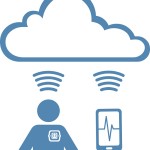Telehealth had slowly been picking up steam in the last decade, but with the onset of COVID-19, it seemed the virtual care option exploded almost overnight. The national telehealth technology and services company Amwell reported that the number of providers on its platform shot up 820% within the first month of the pandemic, while other providers such as Teledoc saw a 100% jump—an average of 20,000 virtual patients visits per day—from the first week of March to mid-April. The American Medical Association (AMA) reported similar surges in Indiana, New York and Boston. Now, with cities and businesses reopening across the United States, physicians predict telemedicine will play an integral role in healthcare moving forward, as long as the changes made by the government to ease restrictions and regulations enabling telehealth are permanent.
The quick pivot by the CMS has been applauded by providers and patients alike but, with the worst of coronavirus behind us, many are concerned the changes will be reversed. To prevent that scenario from happening, some lawmakers are taking swift action, including Rep. Robin Kelly, D-Illinois, who introduced a bill on June 1, 2020 that would mandate a study on the effects of telehealth changes on Medicare and Medicaid during the COVID-19 crisis. Titled Evaluating Disparities and Outcomes of Telehealth During the COVID-19 Emergency Act of 2020, the goal is to demonstrate the positive effects of telehealth and make a case that the relaxed regulations should become the new regulations. Under the bill guidelines, the Secretary of Health and Human Services would be required to provide a range of information—from a summary of healthcare utilization patterns during the coronavirus to a description of expenditures, fraud and privacy concerns—within a year of the end of the emergency period.
A long-time advocate of telehealth, Kelly wrote in July 2019, “There are three major reasons that I believe telemedicine will revolutionize healthcare for the better and potentially become the great equalizer: access to care, improved patient outcomes and enhanced training for providers.” That may be closer to the truth now, particularly as the pandemic has disproportionately impacted minorities and those lacking access to proper preventive care.
Beyond providing urgent care for coronavirus symptoms, telehealth can also address the everyday health needs of people who have been holding off on addressing other healthcare issues. The Commonwealth Fund estimated that early in the pandemic, visits to ambulatory care practices saw nearly a 60% reduction. As of June 25, the number of visits rose but was still about 40% below pre-pandemic visits. Because many patients have likely deferred preventive care out of fear of infection from an in-person visit with a healthcare provider, innovative healthcare organizations and start-ups are taking a leap of faith and forging ahead with new ideas and technologies. The following are just a few of many examples.
Mount Sinai Kravis Children’s Hospital will use a $860,000 grant it received from the Federal Communications Commission to expand its remote care services, including the development of a telehealth app. Through partnerships with PadInMotion and RealTime Clinic, more than 700 devices will be provided—on a rotating basis—to children, as well as their families, who require telehealth monitoring and care.
Higi, a population health enablement company, is enabling consumers to track and act on their health data including blood pressure, pulse, weight, BMI, body composition and hydration through its network of over 11,000 FDA-cleared smart health stations and more than 80 integrated health devices and apps. Located at pharmacy retailers, community locations and employer worksites nationwide, Higi kiosks are utilized by individuals at a rate of nearly 1 million times per week, according to the company. Through the Higi network, its solutions—such as an app that can sync with fitness tracker data and provide information on preventing and managing health conditions—connect consumers and their data to their trusted healthcare organizations in real time to improve satisfaction, increase quality and reduce cost.
Tia, the New York-based developer focused on holistic women’s health, consists of a network of digital wellness apps, clinics and telehealth services, and is on a mission to enable every female to achieve their definition of optimal health. Building products, tools and services through a distinctly female, science-backed lens, Tia offers virtual care through video and chat, as well as in-person visits. Through on-the-go Care Coordinators, it also assists its members with insurance, Rx refills and specific questions about health and wellness. In the near future, Tia plans to open clinics in two new locations in the next two years and offer obstetrics and pregnancy care.
Pre-COVID-19, the World Health Organization reported that hundreds of millions of hospitalized patients—including newborns—acquire life-threatening infections in hospitals annually. The report stated: “Among hospital-born babies in developing countries, healthcare-associated infections are responsible for 4% to 56% of all causes of death in the neonatal period, and 75% in South-East Asia and Sub-Saharan Africa.” In the United States, the CDC states that, “On any given day, about one in 31 hospital patients has at least one healthcare-associated infection.” Imagine the positive impact from telehealth and distance treatment in potentially reducing these numbers. With everything to gain, telehealth may lead to a new global standard in health/wellness treatment while at the same time unifying the entire healthcare ecosystem.







